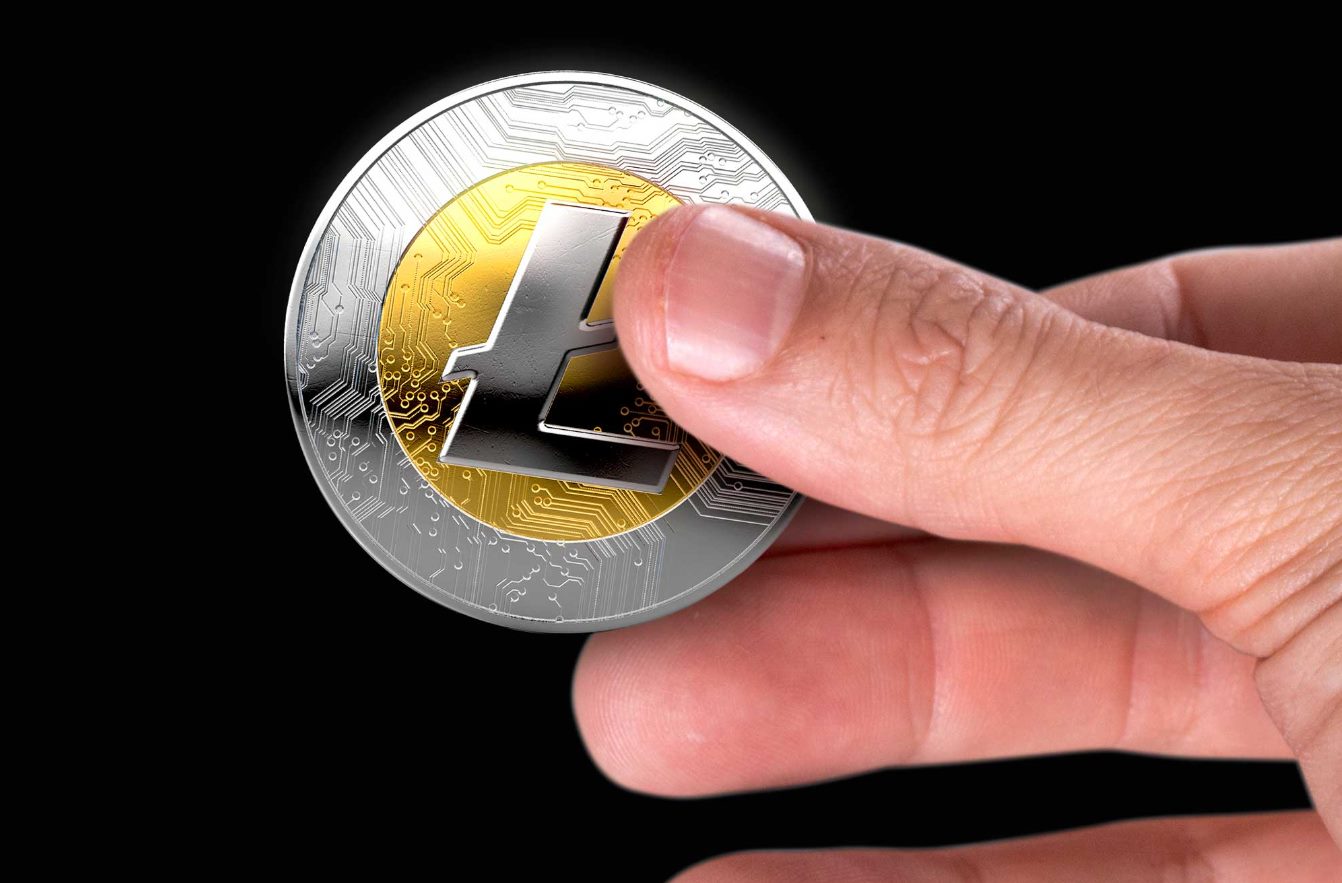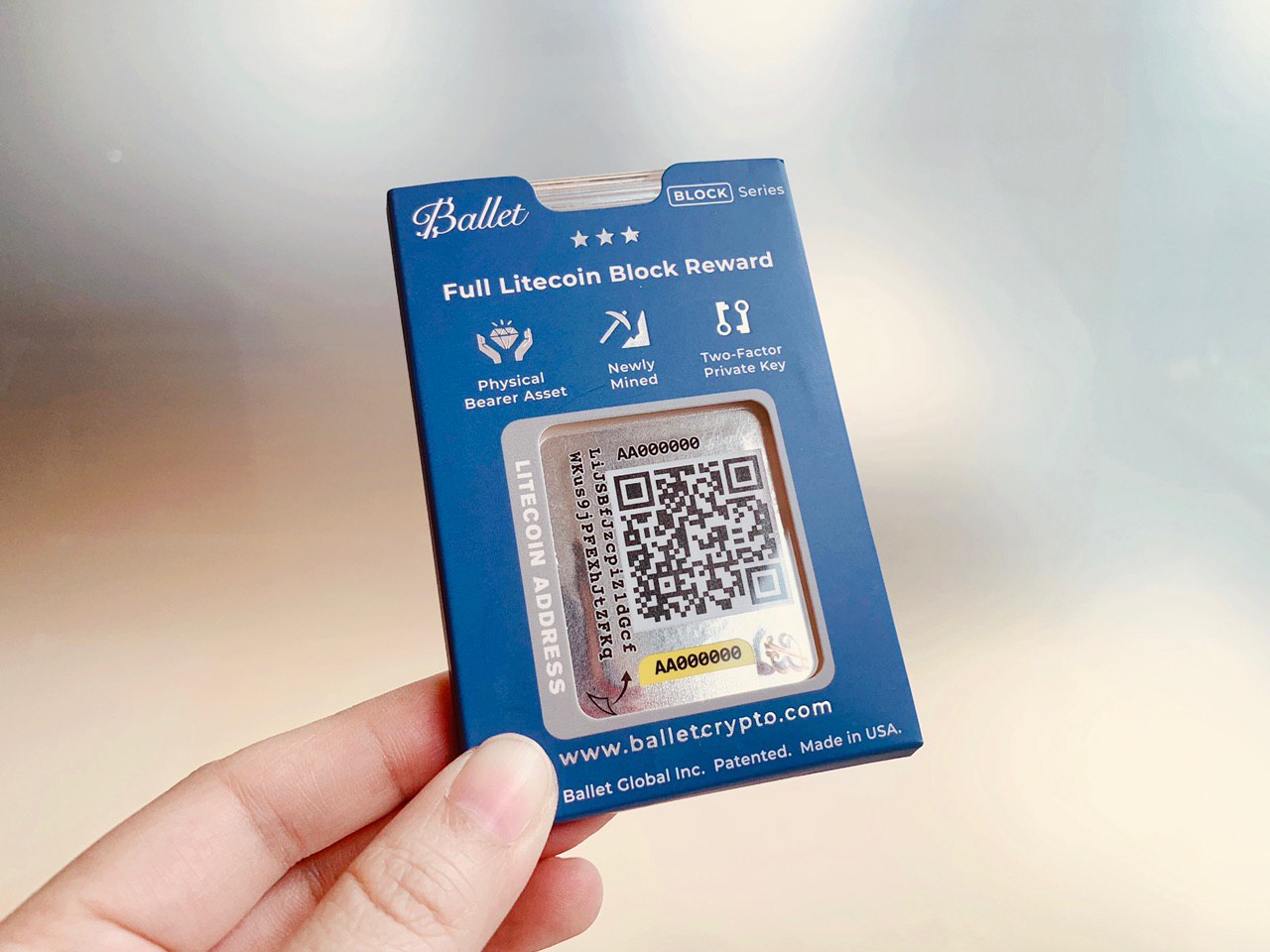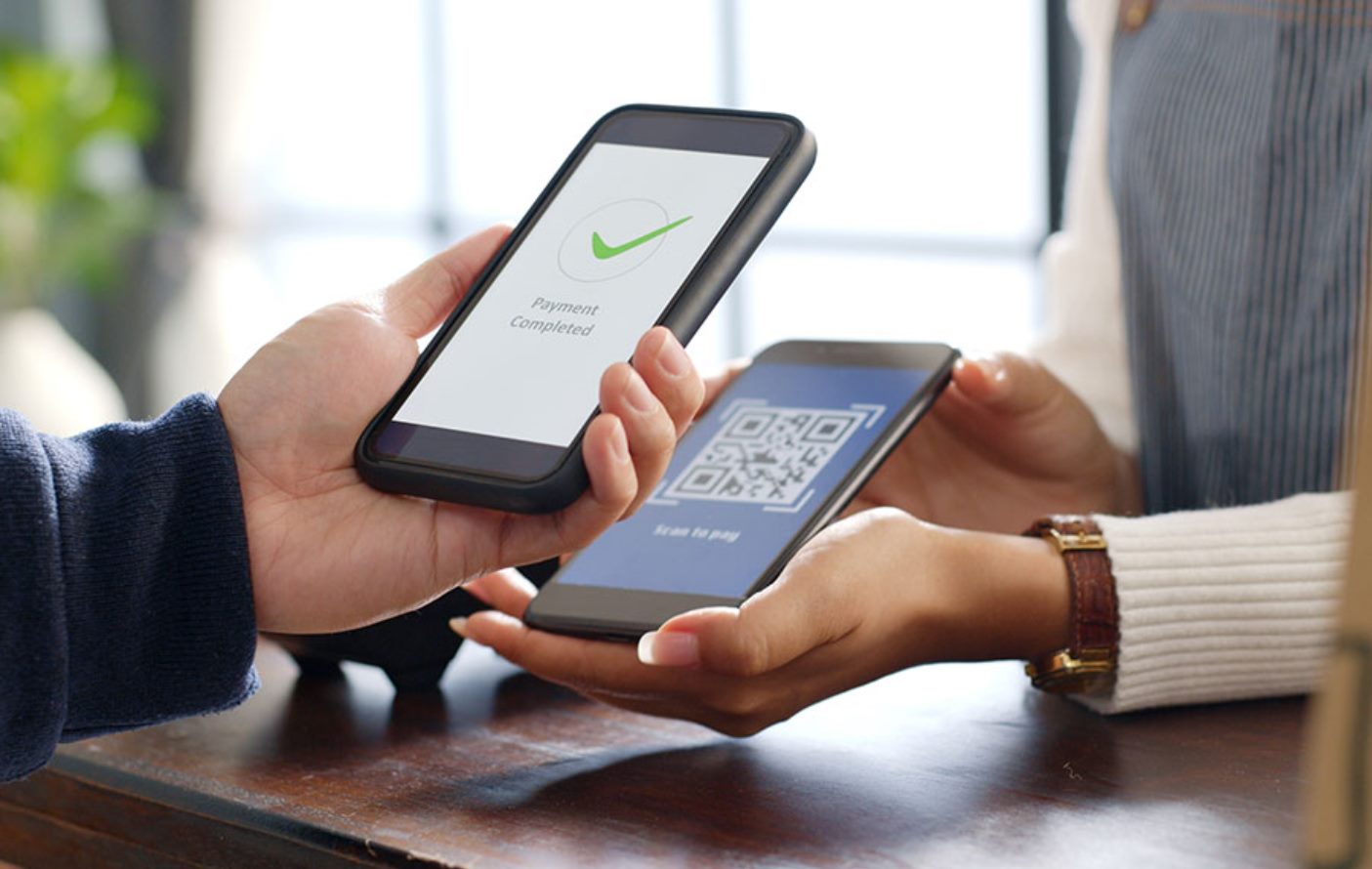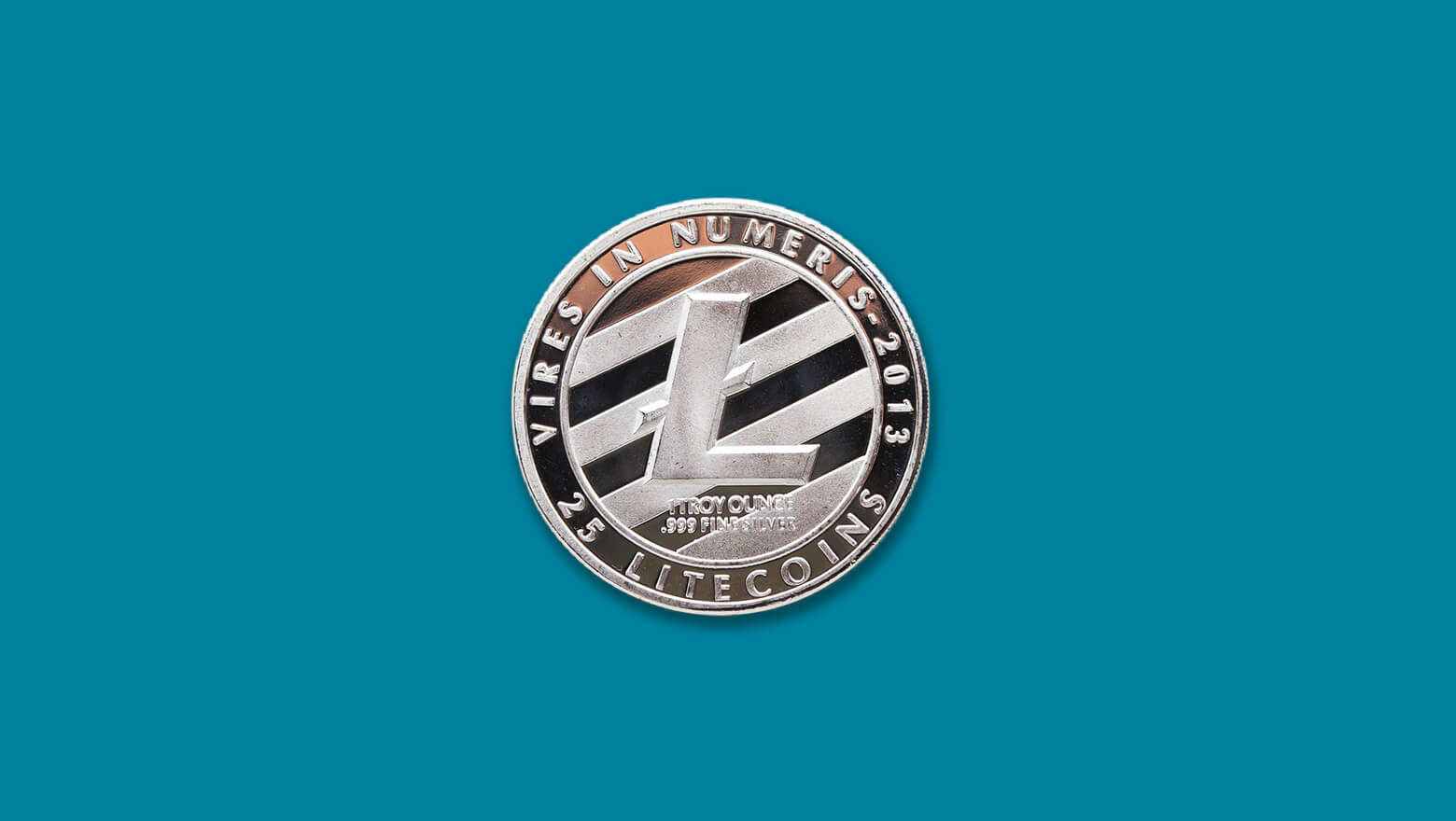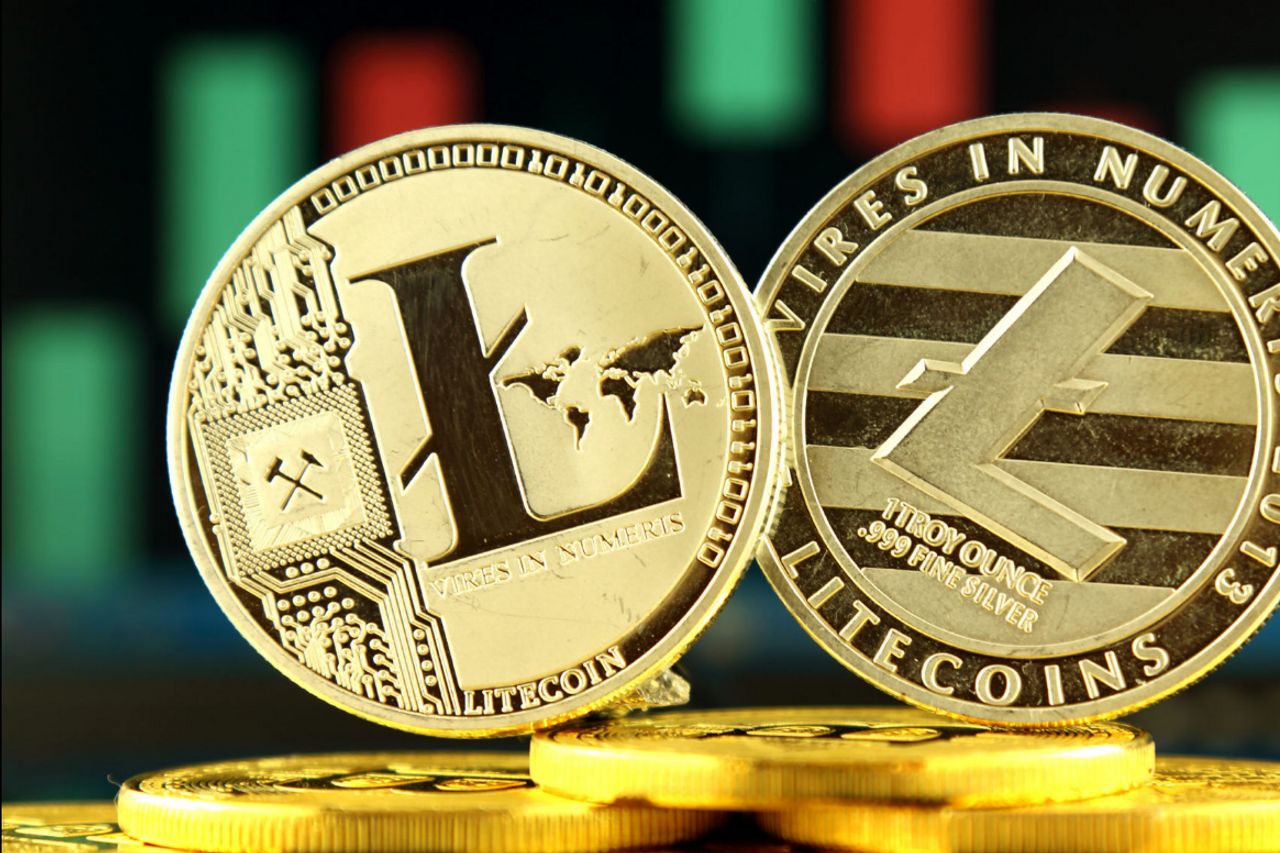What is SegWit?
Segregated Witness, commonly known as SegWit, is a proposed upgrade to the Bitcoin and Litecoin protocols that aims to address some of the scalability and transaction malleability issues. It was first introduced by Bitcoin developer Pieter Wuille in 2015 and was later implemented on the Litecoin network.
SegWit works by separating (or segregating) the witness data from the transaction data stored in each block. The witness data includes the digital signatures, scripts, and other data necessary to validate a transaction. By removing this witness data from the transaction data, SegWit reduces the size of transactions, allowing more transactions to be included in each block.
This innovative upgrade brings several benefits to the blockchain networks. Firstly, it increases the block size limit without actually increasing the block size. This means that more transactions can be processed per block, improving the scalability of the network. Secondly, SegWit solves the issue of transaction malleability. In the traditional Bitcoin and Litecoin protocols, the unique identifier of a transaction, called the transaction hash, could be altered by modifying the witness data. With SegWit, the transaction hash remains unchanged even if the witness data is modified, making the blockchain more secure.
Another notable feature of SegWit is that it enables the implementation of second-layer protocols, such as the Lightning Network. This layer allows for faster and cheaper transactions by moving most transactions off-chain. By utilizing payment channels, users can transact with each other directly without relying on the blockchain for every transaction.
Overall, SegWit is a crucial development in the world of cryptocurrencies as it solves some of the fundamental issues faced by Bitcoin and Litecoin. It improves transaction capacity, reduces transaction fees, enhances security, and enables the development of innovative second-layer solutions. Its activation and adoption on the Litecoin network have paved the way for widespread implementation on other cryptocurrencies, promising a more scalable and efficient blockchain ecosystem.
Why is SegWit important?
SegWit, short for Segregated Witness, holds significant importance in the world of cryptocurrencies, particularly for networks like Bitcoin and Litecoin. Here are some key reasons why SegWit is considered important:
1. Scalability: One of the main challenges faced by blockchain networks is scalability. As the number of transactions increases, the traditional block size limit can lead to congestion and slower verification times. SegWit addresses this issue by increasing the transaction capacity of the network. By removing the witness data from the transaction block, SegWit enables more transactions to be included in each block, improving scalability.
2. Transaction malleability: Transaction malleability refers to the ability to modify a transaction’s unique identifier (transaction hash) without changing its content. This can create complications for applications built on top of the blockchain, such as smart contracts. SegWit solves this issue by separating the witness data from the transaction data, ensuring that any modifications to the witness data do not affect the transaction hash. This enhancement increases the security and reliability of the network.
3. Lightning Network and second-layer solutions: SegWit paves the way for the implementation of second-layer protocols like the Lightning Network. The Lightning Network is designed to facilitate off-chain transactions, enabling faster and cheaper transactions compared to on-chain transactions. By utilizing payment channels, users can transact with each other directly without depending on the blockchain for every transaction. SegWit’s activation is a vital step towards realizing the full potential of second-layer solutions and enabling the wider adoption of cryptocurrencies for everyday transactions.
4. Transaction fee reduction: The increase in transaction capacity made possible by SegWit allows more transactions to be processed within each block, resulting in lower transaction fees. This reduction in fees makes cryptocurrencies more accessible and cost-effective for users and enables micropayments, allowing for new use cases and business models to flourish.
5. Enhanced functionality: SegWit introduces new scripting capabilities that enhance the functionality of smart contracts and facilitate the development of more complex decentralized applications (DApps) on the blockchain. These additional scripting capabilities open up new possibilities for innovation and expand the potential applications of cryptocurrencies beyond simple peer-to-peer transactions.
In summary, SegWit’s importance stems from its ability to address scalability issues, provide transaction malleability fixes, enable second-layer solutions like the Lightning Network, reduce transaction fees, and enhance the functionality of blockchain networks. Its implementation on networks such as Bitcoin and Litecoin demonstrates the commitment to innovate and improve the overall efficiency and usability of cryptocurrencies.
The SegWit Activation Process on Litecoin
The activation process for Segregated Witness (SegWit) on the Litecoin network involved a series of steps that engaged the community and ensured a smooth transition. Here’s an overview of the SegWit activation process on Litecoin:
1. Proposal and discussion: The proposal to activate SegWit on the Litecoin network was put forward by the Litecoin Core development team. This proposal was open for discussion amongst community members, including miners, developers, and users. The discussion phase allowed for feedback, concerns, and suggestions to be addressed before moving forward.
2. Consensus building: Consensus building is a critical aspect of any major protocol upgrade. The Litecoin community organized various meetings and discussions to gather support and ensure broad consensus for SegWit activation. It involved engaging with mining pools, node operators, wallet providers, and other stakeholders to rally behind the proposed upgrade.
3. Activation method: The activation method chosen for SegWit on Litecoin was through a User Activated Soft Fork (UASF). This means that user nodes would enforce the new SegWit rules at a specific block height, regardless of miner support. The UASF approach ensured that the activation of SegWit was driven by the user community, highlighting its democratic nature.
4. BIP9 signaling: The signaling process using BIP9 (Bitcoin Improvement Proposal 9) was adopted to determine the readiness of the network for SegWit activation. Miners signaled their support for SegWit by including a specific code within their mined blocks. This signaling period typically lasted for a specific number of blocks to assess the overall support from the miners.
5. Threshold activation: For SegWit activation to occur on Litecoin, a threshold of 75% mining support was required. Once this threshold was reached during the signaling period, the network was deemed ready for SegWit activation. It ensured that a significant majority of the mining community was in favor of the upgrade before implementation.
6. Activation and enforcement: After surpassing the threshold, SegWit was activated at a predetermined block height. All user nodes and miners upgraded their software accordingly to enforce the new SegWit rules. Once activated, SegWit became part of the consensus rules for validating transactions on the Litecoin network.
By following this multi-step process of proposal, discussion, consensus building, activation method selection, signaling, threshold activation, and enforcement, the Litecoin community was able to successfully activate SegWit. This process showcased the decentralized and democratic nature of the Litecoin network and ensured that all stakeholders had a voice in the activation decision.
How does SegWit Activation Work on Litecoin?
Segregated Witness (SegWit) activation on the Litecoin network involves a technical process that requires coordination between various network participants. Here’s a breakdown of how SegWit activation works on Litecoin:
1. BIP9 Implementation: Litecoin adopts the Bitcoin Improvement Proposal 9 (BIP9) method for SegWit activation. BIP9 utilizes version bits in block headers to indicate readiness for the activation of a new feature. Miners and nodes signal their support for SegWit by including a specific bit in their blocks, demonstrating their willingness to enforce the new SegWit rules.
2. SegWit Deployment Period: The SegWit deployment period begins once a supermajority (specified threshold) of miners signal their support for SegWit. The deployment window lasts for 8064 blocks (approximately two weeks) to allow all nodes and miners to upgrade their software to enforce the new SegWit rules.
3. End of Deployment Period: At the end of the deployment period, a SegWit-specific block is mined to activate the new feature. This block includes a coinbase transaction with a witness commitment, signaling the enforcement of SegWit rules moving forward.
4. Blocks and Witness Data: With SegWit activated, newly mined blocks start separating the transaction data from the witness data. Previously, the witness data was attached to transaction data, but now it is stored in a separate data structure called the “witness block.” This restructuring reduces the effective size of transactions, enabling an increased transaction capacity within each block.
5. Block Validation: Nodes on the Litecoin network validate blocks according to the updated SegWit rules. This includes verifying transactions, signatures, scripts, and witness data. Miners also include the witness data in the block header, ensuring the immutability of transactions while minimizing the block size.
6. Transaction Compatibility: SegWit maintains backward compatibility with older nodes that haven’t upgraded to enforce the new rules. These nodes can still process transactions that follow the pre-SegWit transaction format. However, they won’t benefit from the increased transaction capacity provided by SegWit-adopting nodes.
7. SegWit Wallet Integration: Users and developers can take advantage of SegWit’s benefits by utilizing SegWit-integrated wallets. These wallets support the creation of SegWit-enabled addresses, which have a “3” prefix compared to the traditional “L” prefix addresses. Users can then send and receive transactions using these SegWit addresses, enjoying lower fees and improved transaction efficiency.
The activation of SegWit on Litecoin requires consensus among miners, nodes, and users, as they all play a crucial role in enforcing the new rules. By upgrading their software, supporting signaling, and validating blocks according to the updated rules, they collectively facilitate the successful activation and implementation of SegWit on the Litecoin network.
How long did it take for SegWit to activate on Litecoin?
The activation of Segregated Witness (SegWit) on the Litecoin network was a significant milestone that required time and support from the community. In total, it took approximately four weeks for SegWit to activate on Litecoin. Here’s a breakdown of the timeline:
1. SegWit Proposal: The proposal to activate SegWit on Litecoin was introduced by the Litecoin Core development team in October 2016. This marked the beginning of the process, as the community started discussing and evaluating the potential benefits and drawbacks of the proposed upgrade.
2. Consensus Building: Consensus building played a crucial role in securing broad support for the SegWit proposal. The Litecoin community actively engaged with miners, developers, wallet providers, and other stakeholders to ensure their understanding of SegWit’s benefits, address concerns, and gather feedback. Consensus building involved various meetings, communications, and discussions that allowed the community to align and generate support.
3. BIP9 Signaling Period: To gauge the readiness of the network for SegWit activation, a signaling period was initiated using the BIP9 method. Miners signaled their support for SegWit by including a specific code in their mined blocks. This signaling period lasted for approximately three weeks, during which the community closely monitored the level of support from the mining ecosystem.
4. Threshold Activation: The activation threshold for SegWit on the Litecoin network was set at 75% miner support. Once this threshold was reached, signaling continued for an additional two-week period to ensure a sustained level of support. This additional period helped confirm that the support for SegWit was stable and not just temporary or fleeting.
5. SegWit Activation: Following the successful signaling and surpassing the activation threshold, SegWit was activated on the Litecoin network. A special block was mined to officially enforce the rules of SegWit, making it an integral part of the consensus rules for validating transactions on the network.
The entire SegWit activation process from proposal to implementation took approximately four weeks on the Litecoin network. This timeframe is indicative of the engagement and cooperation within the Litecoin community, as well as the broad consensus achieved among miners, developers, and other stakeholders.
The successful activation of SegWit on Litecoin created a solid foundation for the network’s future growth and scalability. It showcased the ability of the Litecoin community to navigate important protocol upgrades and adapt to evolving needs, ultimately leading to a more efficient and effective blockchain ecosystem.
How does SegWit benefit Litecoin?
Segregated Witness (SegWit) brings several significant benefits to the Litecoin network, improving its functionality, scalability, and transaction efficiency. Here are some key ways in which SegWit benefits Litecoin:
1. Increased Transaction Capacity: SegWit separates the witness data from the transaction data, allowing more transactions to be included in each block. This increase in transaction capacity enhances the scalability of the Litecoin network, enabling it to handle a higher volume of transactions and reducing congestion.
2. Lower Transaction Fees: With the increased transaction capacity, SegWit helps alleviate congestion and reduce the average transaction fees on the Litecoin network. The separation of witness data and the optimization of block space usage allow for more efficient transaction processing, benefiting users with lower fees for their transactions.
3. Improved Transaction Malleability Fix: Transaction malleability refers to the ability to modify a transaction’s unique identifier (transaction hash) without changing its content. SegWit solves this issue by segregating the witness data, which prevents it from modifying the transaction hash. This enhancement provides a more secure and reliable transaction validation process on the Litecoin network.
4. Lightning Network Integration: SegWit enables the implementation of second-layer protocols, such as the Lightning Network, on the Litecoin network. The Lightning Network facilitates off-chain transactions, allowing for faster and cheaper transactions by reducing the load on the main blockchain. This integration provides users with the ability to conduct microtransactions and enables various payment channels and use cases.
5. Enhanced Scripting Capabilities: SegWit introduces new scripting capabilities that expand the functionality of smart contracts on the Litecoin network. These enhanced scripting capabilities enable the development of more complex decentralized applications (DApps) and open up new possibilities for innovation in the blockchain ecosystem.
6. Network Interoperability: SegWit activation on Litecoin also aligns the network with the broader cryptocurrency ecosystem. Since SegWit is already implemented on other major networks like Bitcoin, Litecoin’s SegWit compatibility allows for easier implementation of cross-chain transactions and interoperability between different blockchain networks.
Collectively, these benefits make Litecoin a more scalable, efficient, and versatile blockchain platform. SegWit’s implementation strengthens the network’s infrastructure, improves transaction processing speed, reduces fees, and opens up doors for innovative applications. It reinforces Litecoin’s position as a leading cryptocurrency and demonstrates the commitment of the Litecoin community to push the boundaries of blockchain technology.
How does SegWit Affect Transaction Capacity and Fees on Litecoin?
Segregated Witness (SegWit) has a significant impact on transaction capacity and fees on the Litecoin network, offering improvements in both areas. Here’s a closer look at how SegWit affects transaction capacity and fees:
1. Increased Transaction Capacity: SegWit separates the witness data from the transaction data, reducing the size of transactions on the Litecoin network. By removing the witness data, which includes digital signatures and scripts, SegWit optimizes the use of block space. This increase in transaction capacity allows more transactions to be included in a single block, effectively boosting the throughput of the network.
2. Transaction Weight Calculation: With SegWit, the size of a transaction is measured in terms of “transaction weight” instead of the traditional “block size.” The transaction weight considers the size of the witness data alongside the transaction data, giving more weight to the former. Since witness data is usually larger than transaction data, this change ensures that the block size limit is utilized more efficiently.
3. Fee Reduction: SegWit’s impact on fee reduction is two-fold. Firstly, since SegWit allows more transactions to fit into a block, it reduces transaction congestion. This reduction in competition for limited block space naturally lowers transaction fees. Users can benefit from lower fees when sending transactions on the Litecoin network.
Secondly, the use of transaction weight instead of block size also affects fee calculation. Transaction fees are typically determined based on the size of transactions. With SegWit, the same transaction will have a lower weight compared to using the traditional block size metric. As a result, fees are calculated based on the lower weight, leading to potential savings for users.
4. Optimization for Small or Complex Transactions: SegWit particularly benefits transactions that contain multiple inputs or outputs, or complex scripting. These types of transactions tend to take up more block space, and their inclusion in a block can limit overall transaction capacity. With SegWit, the witness data, which often constitutes a significant portion of such transactions, is separated, resulting in more efficient use of block space and increased capacity for these specific transaction types.
5. Incentives for Adoption: The fee reduction and improved transaction capacity brought by SegWit create incentives for users to adopt SegWit addresses and utilize SegWit-enabled wallets. By using SegWit addresses, users can benefit from lower fees and faster transaction confirmations. The uptake of SegWit addresses further contributes to reducing overall network congestion and increasing transaction capacity.
In summary, SegWit positively affects transaction capacity and fees on the Litecoin network. Its implementation allows for increased transaction throughput per block, reducing congestion and lowering fees. Additionally, the separation of witness data optimizes the utilization of block space, enabling more efficient processing of small or complex transactions. This advancement promotes better scalability and cost-effectiveness for users conducting transactions on the Litecoin network.
What happens if SegWit doesn’t Activate on Litecoin?
If Segregated Witness (SegWit) doesn’t activate on the Litecoin network, it would have certain implications for the network and its users. Here are some potential outcomes if SegWit doesn’t activate on Litecoin:
1. Limited Transaction Scalability: Without SegWit, the block size limit on the Litecoin network remains unchanged. As transaction volumes increase, the limited block size could lead to congestion and slower transaction processing times. This limitation in transaction scalability may hinder Litecoin’s ability to handle a growing number of transactions efficiently.
2. Higher Transaction Fees: The lack of SegWit activation means that the block space available for transactions remains constrained. As a result, users may experience higher transaction fees due to increased competition for block space. This can make transactions more costly, especially during periods of high network congestion.
3. Transaction Malleability Vulnerability: The absence of SegWit leaves the transaction malleability issue unresolved. Transaction malleability allows for the modification of a transaction’s unique identifier (transaction hash) without altering its content. This vulnerability can impact the reliability and security of applications built on the Litecoin network, such as smart contracts and decentralized exchanges.
4. Slower Adoption of Second-Layer Solutions: SegWit activation is a stepping stone towards the implementation of second-layer protocols like the Lightning Network. Without SegWit, the adoption and integration of these advanced scalability solutions may be hindered. This could delay the development and deployment of off-chain transaction networks that provide faster and more cost-effective transactions.
5. Reduced Interoperability: SegWit has become a widely adopted standard across the cryptocurrency ecosystem, including Bitcoin and other major networks. Without activation on Litecoin, there may be challenges in facilitating cross-chain transactions and interoperability with other SegWit-compatible blockchains. This could limit the ability to leverage innovative solutions and benefit from improved network compatibility.
6. Missed Innovation Opportunities: SegWit’s activation introduces new scripting capabilities and expands the functionality of smart contracts on the Litecoin network. Without activation, these innovative features may not be available, potentially limiting the range of applications and use cases that can be built on the Litecoin blockchain. This could hamper the network’s ability to attract developers and foster new innovations.
In summary, the non-activation of SegWit on the Litecoin network could result in limited transaction scalability, higher transaction fees, unresolved transaction malleability vulnerabilities, slower adoption of second-layer solutions, reduced interoperability, and missed opportunities for innovation. Activating SegWit is crucial for improving the network’s efficiency, security, and compatibility with other SegWit-enabled blockchains.
Other Cryptocurrencies that have Activated SegWit
Segregated Witness (SegWit) has been successfully activated on several cryptocurrencies, providing enhanced performance and functionality. Here are some notable cryptocurrencies that have activated SegWit:
1. Bitcoin (BTC): Bitcoin was the first major cryptocurrency to implement SegWit. After a long period of debate and discussion, SegWit was activated on the Bitcoin network in August 2017. The activation of SegWit on Bitcoin led to improved transaction capacity, reduced fees, and paved the way for the development of second-layer solutions like the Lightning Network.
2. Litecoin (LTC): Following in the footsteps of Bitcoin, Litecoin activated SegWit in May 2017. The activation of SegWit on Litecoin brought increased transaction capacity, lower fees, and improved transaction malleability fixes. Litecoin’s successful implementation of SegWit showcased its commitment to innovation and scalability.
3. Vertcoin (VTC): Vertcoin, a peer-to-peer cryptocurrency, activated SegWit in May 2017. SegWit adoption on Vertcoin introduced benefits such as increased transaction capacity, lower transaction fees, and improved security. It also allowed for the implementation of advanced features and second-layer solutions to enhance the functionality of the network.
4. Groestlcoin (GRS): Groestlcoin, known for its focus on privacy and security, activated SegWit in October 2017. SegWit integration on Groestlcoin resulted in increased transaction capacity, improved scalability, and lower transaction fees. The activation of SegWit further solidified Groestlcoin’s position as a technologically advanced cryptocurrency.
5. DigiByte (DGB): DigiByte, a decentralized cryptocurrency focused on security and speed, activated SegWit in April 2018. The adoption of SegWit on DigiByte allowed for increased transaction capacity, improved scalability, and enhanced security. It also opened the door for the implementation of second-layer solutions to further enhance the overall efficiency of the network.
6. Dogecoin (DOGE): Dogecoin, a cryptocurrency initially created as a joke, activated SegWit in February 2018. While Dogecoin’s activation of SegWit brings benefits like increased transaction capacity and improved scalability, its primary purpose was to enhance compatibility with other SegWit-enabled networks. This cross-network compatibility enables smoother integration and interoperability with other cryptocurrencies.
These are just a few examples of cryptocurrencies that have activated SegWit, demonstrating the widespread adoption and recognition of the benefits it offers. SegWit activation across multiple cryptocurrencies signifies its importance as a significant upgrade to enhance transaction capacity, reduce fees, improve security, and foster the development of innovative second-layer solutions.
Conclusion
Segregated Witness (SegWit) has emerged as a crucial upgrade for blockchain networks like Bitcoin and Litecoin, addressing scalability, transaction malleability, and transaction throughput challenges. By separating witness data from transaction data, SegWit facilitates increased transaction capacity, lower fees, improved security, and innovative second-layer solutions.
On the Litecoin network, SegWit activation was successfully achieved through a consensus-driven process involving proposal, discussion, consensus-building, signaling, and activation methodology. The activation of SegWit on Litecoin demonstrated the network’s commitment to innovation, scalability, and user-driven decision-making.
SegWit’s benefits on Litecoin are evident in its increased transaction capacity, lower transaction fees, enhanced security, support for second-layer solutions like the Lightning Network, and improved functionality for smart contracts and decentralized applications. These improvements make Litecoin a more scalable, efficient, and versatile blockchain platform.
SegWit’s activation on Litecoin also aligns it with other major cryptocurrencies that have adopted SegWit, such as Bitcoin, Vertcoin, Groestlcoin, DigiByte, and Dogecoin. This cross-network compatibility opens doors for interoperability and facilitates seamless integration between different blockchain ecosystems.
While the activation of SegWit on Litecoin has brought numerous benefits, the non-activation of SegWit would adversely impact transaction scalability, potentially leading to higher fees, unresolved transaction malleability vulnerabilities, slower adoption of second-layer solutions, reduced interoperability, and missed opportunities for innovation.
Overall, the deployment of SegWit on Litecoin and other cryptocurrencies showcases the industry’s commitment to advancing blockchain technology, improving transaction efficiency, and providing a more seamless and user-friendly experience for cryptocurrency users. The activation of SegWit represents a major milestone in the evolution of blockchain networks, paving the way for further scalability improvements and the development of innovative applications.









